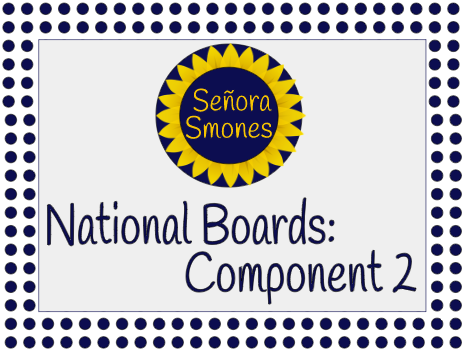In my opinion Component 2 was the least time consuming of the components and the most straight forward. Which is why may teachers recommend doing Component 2 in the same year at Component 3. Personally, I did Component 2 in the same year as Component 1, for more on that, refer back to my previous post. Component 2 centers around differentiation for 2 students. I chose to show how I progressed two of my Spanish 1 students’ reading skills through authentic texts. I selected a formative assessment as my first assessment and the chapter’s summative assessment for my second one. My goal was to show that each of my students performed better on the summative assessment through my differentiation of the content. As always, bear in mind that these are my reflections from my National Board experience and you should always refer to the official instructions from the National Board when preparing.
After talking with my colleague, whose highest score was on Component 2, here are a couple recommendations:
- Really highlight how each of your students fits a different learning style (kinesthetic, visual, etc.) in your commentary.
- You don’t have to use the same type of assessment. Again, my French teaching colleague used two different types of assessments as her two assessments, an interpersonal and a presentational.
My general portfolio recommendations:
- Go through the standards each component focuses on and make sure you understand them. This way you can incorporate evidence of them in your portfolio entry. When I started the process other teachers recommended creating a document with important information about each standard. I followed their advice and mine looks like this.
- Carefully read the instructions related to component overlap. There are very specific instructions about how Components 2, 3 and 4 can intersect.
- Use the component directions to determine when you can start collecting evidence. For Component 2, because I had 12 months from the opening of the submission window I collected evidence at the end of the school year. I then had the whole summer to work on my written commentary, which was great!
- When writing your written commentaries, answer the questions in the order in which they appear in the directions. Also don’t use compound verb tenses, they take up space! Other space saving tricks are putting less spaces between sentences, not using a full tab to indent paragraphs and abbreviating when possible. Make sure you read the instructions about abbreviation!
- I used the What Works books by Bobbie Faulkner, particularly for sentence starters.
Check out all my National Board Certification posts here.
